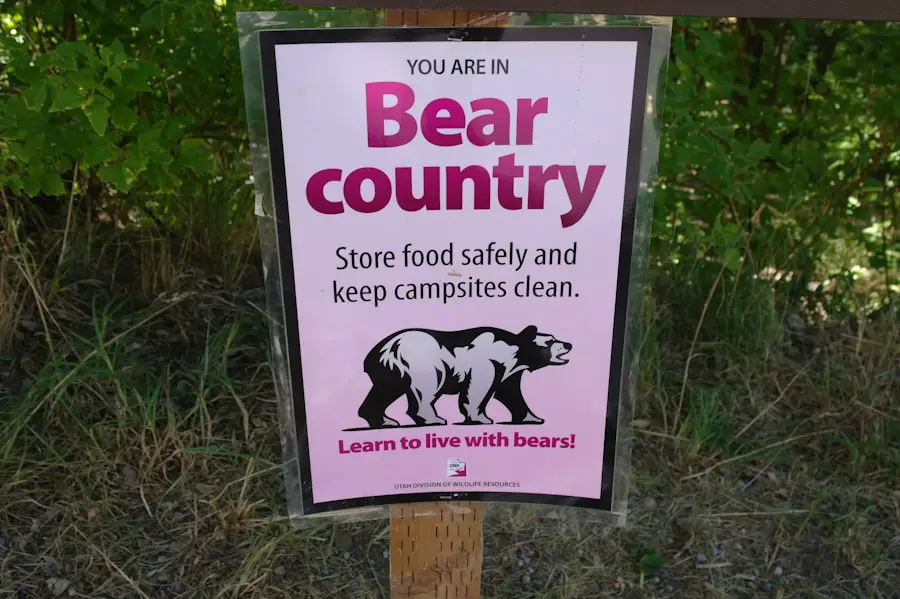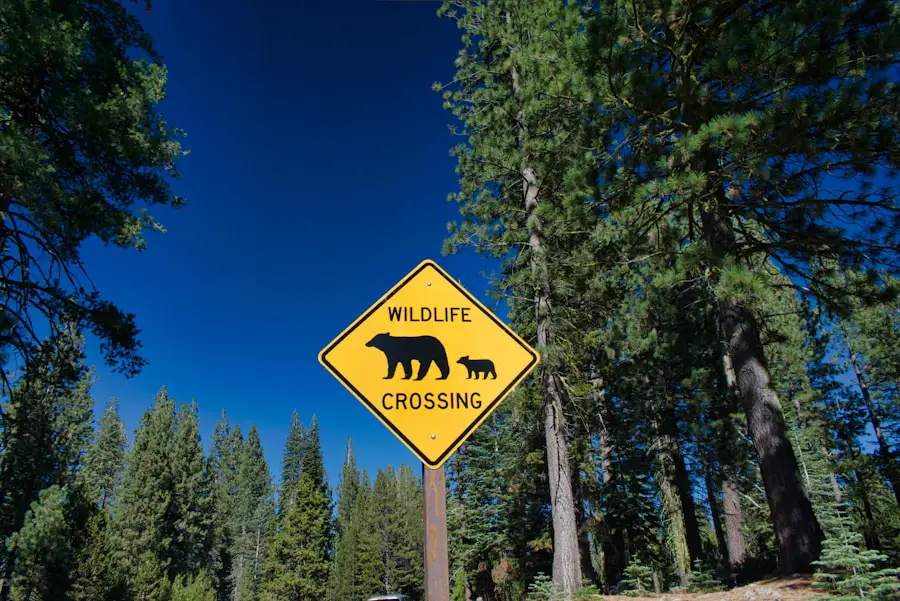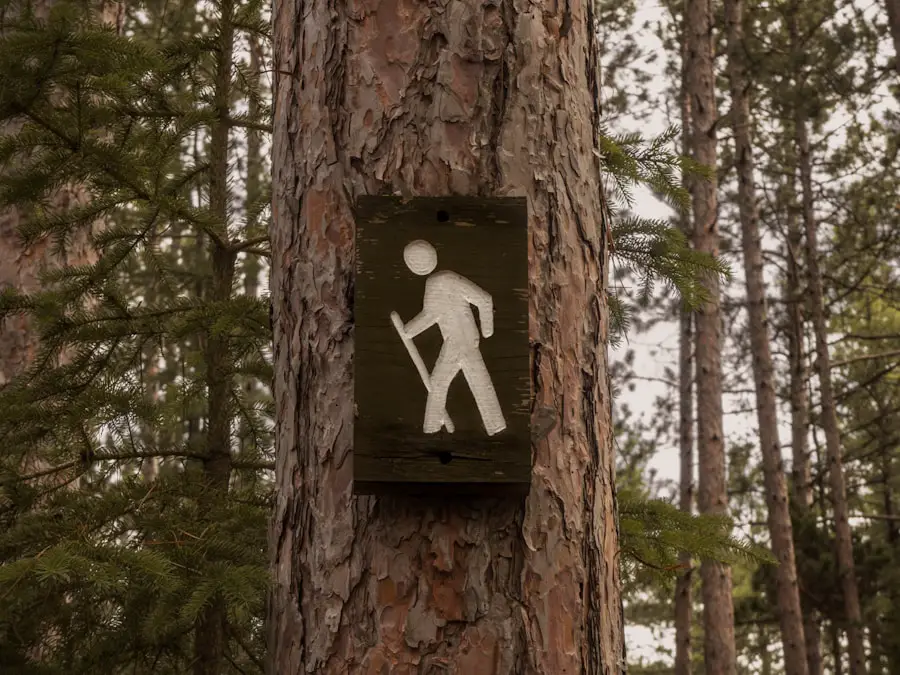Bears are complex creatures with behaviors that can vary significantly depending on the species, environment, and individual circumstances. The most common species encountered in North America include the American black bear, the brown bear (or grizzly bear), and the polar bear. Each species exhibits unique traits and habits that are essential for outdoor enthusiasts to understand.
For instance, black bears are generally more timid and tend to avoid human interaction, while grizzly bears can be more aggressive, especially when they feel threatened or are protecting their young. Understanding these behavioral nuances is crucial for anyone venturing into bear country. Bears are primarily driven by their instincts, which include foraging for food, establishing territory, and caring for their young.
Their diet is omnivorous, consisting of fruits, nuts, insects, and small mammals, which means they can be attracted to human food sources. This attraction can lead to dangerous encounters if bears associate humans with food. Additionally, bears have a keen sense of smell—up to seven times better than that of a bloodhound—which allows them to detect food from miles away.
Recognizing these behaviors can help individuals take proactive measures to minimize the risk of an encounter.
Key Takeaways
- Bears are generally shy and avoid humans, but understanding their behavior can help prevent encounters.
- Choosing the right gear, such as bear-proof containers for food and bear spray, can help deter bears and keep you safe.
- Making noise while on the trail can alert bears to your presence and prevent surprise encounters.
- Storing food and waste properly in bear-proof containers and disposing of waste in designated areas can help prevent attracting bears to your campsite.
- Identifying and avoiding bear habitat, such as berry patches and salmon streams, can reduce the likelihood of encountering bears.
Choosing the Right Gear
When preparing for a trip into bear territory, selecting the appropriate gear is paramount. One of the most critical items is a bear-resistant food container or canister. These containers are designed to withstand a bear’s powerful jaws and claws, ensuring that food remains secure and inaccessible.
Many parks and wilderness areas require the use of such containers, as they significantly reduce the likelihood of attracting bears to campsites. In addition to food storage, it is wise to carry a bear spray canister. Bear spray is a highly effective deterrent that can stop a bear in its tracks if used correctly.
Clothing and personal items also play a role in bear safety. It is advisable to wear unscented products and avoid bringing items that have strong odors, such as heavily scented toiletries or food wrappers. Keeping a clean campsite is essential; therefore, packing items that are easy to clean and maintain can help minimize odors.
Additionally, having a first-aid kit on hand is crucial for any outdoor adventure, as injuries can occur in remote areas where immediate medical assistance may not be available.
Making Noise on the Trail

One effective strategy for preventing bear encounters is making noise while hiking or walking in bear country. Bears are generally shy animals that prefer to avoid humans; however, they may not hear hikers approaching if they are quiet. Making noise can alert bears to your presence, giving them the opportunity to move away before an encounter occurs.
Simple actions like talking loudly, clapping hands, or using bells attached to backpacks can serve this purpose well. In addition to making noise, it is important to be aware of your surroundings. Hiking in groups can also be beneficial, as larger groups tend to make more noise and are less likely to surprise a bear.
When hiking in areas known for bear activity, it is advisable to stay on established trails and avoid dense brush where visibility is limited. This combination of noise-making and situational awareness can significantly reduce the chances of an unexpected encounter with a bear.
Storing Food and Waste Properly
| Country | Percentage of Food Waste | Percentage of Properly Stored Food |
|---|---|---|
| United States | 30% | 65% |
| United Kingdom | 27% | 70% |
| Germany | 31% | 60% |
| Japan | 20% | 75% |
Proper food storage is one of the most critical aspects of bear safety. Bears have an extraordinary sense of smell and can detect food from great distances. Therefore, it is essential to store food in bear-resistant containers or hang it from trees at least 10 feet off the ground and 4 feet away from the trunk.
This method not only keeps food out of reach but also minimizes the risk of attracting bears to campsites. In areas where bear canisters are not required but recommended, using them can still provide an extra layer of safety. Waste management is equally important in preventing bear encounters.
All food scraps, wrappers, and other waste should be disposed of properly. In many national parks and wilderness areas, there are specific guidelines for disposing of waste, including using designated trash bins or packing out all trash when leaving the area. Additionally, human waste should be buried at least six inches deep and at least 200 feet away from water sources to prevent contamination and reduce odors that might attract bears.
Identifying and Avoiding Bear Habitat
Understanding where bears are likely to be found is crucial for minimizing encounters. Bears typically inhabit areas with abundant food sources such as berry patches, streams with fish, and forests rich in nuts and acorns. They are often active during dawn and dusk when they forage for food.
By identifying these habitats, hikers can plan their routes accordingly and avoid areas where bears are more likely to be present. Certain environmental factors can also indicate potential bear activity. For example, signs such as claw marks on trees, bear scat (droppings), or overturned rocks can signal that bears frequent an area.
Being vigilant for these signs while hiking can help individuals make informed decisions about their surroundings. Additionally, it is wise to consult local wildlife agencies or park rangers for information about recent bear sightings or activity in specific areas before embarking on a trip.
Using Bear Deterrents

Bear deterrents play a vital role in ensuring safety while exploring bear country. Bear spray is one of the most effective tools available; it contains capsaicin, the active ingredient in chili peppers, which causes temporary blindness and difficulty breathing in bears when sprayed directly at them. It is essential to carry bear spray in an easily accessible location and practice using it before heading into the wilderness.
Knowing how to deploy it effectively can make a significant difference in an emergency situation. In addition to bear spray, other deterrents such as noise-making devices or motion-activated alarms can be beneficial in keeping bears at bay. Some campers opt for electronic deterrents that emit sounds or lights when triggered by movement.
While these devices may not guarantee complete safety, they can serve as an additional layer of protection when camping in areas with known bear activity.
Knowing What to Do in a Bear Encounter
Despite taking precautions, there may still be instances where a bear encounter occurs. Understanding how to react in such situations is crucial for personal safety. If you encounter a bear at a distance, it is best to remain calm and avoid sudden movements.
Back away slowly while speaking softly to the bear; this signals that you are not a threat. Running away can trigger a chase response in bears, which could lead to dangerous consequences. If a bear approaches you or charges, do not run; instead, stand your ground and prepare your bear spray if you have it.
In cases where a bear makes contact or attacks, playing dead may be the best course of action—especially with grizzly bears—by lying flat on your stomach with your hands clasped behind your neck. For black bears, fighting back with any available objects may be necessary as they tend to be more predatory in nature.
Educating Others about Bear Safety
One of the most effective ways to enhance safety in bear country is through education and awareness. Sharing knowledge about bear behavior, safety practices, and proper food storage techniques with fellow outdoor enthusiasts can significantly reduce the risk of dangerous encounters. Community workshops or presentations led by wildlife experts can provide valuable insights into living harmoniously with bears while enjoying nature.
Additionally, utilizing social media platforms or local outdoor clubs to disseminate information about bear safety can reach a broader audience. Encouraging responsible behavior among hikers and campers fosters a culture of respect for wildlife and promotes safer outdoor experiences for everyone involved. By educating others about the importance of understanding bear behavior and implementing safety measures, we contribute to preserving both human lives and the well-being of these magnificent creatures in their natural habitats.
When hiking in bear country, it is important to be prepared and stay safe. One essential item to consider bringing on your hike is a reliable power bank for international travel, such as the one recommended in this article. Having a fully charged phone can be crucial in case of emergencies while out in the wilderness. Additionally, wearing the right gear, like odor-resistant merino wool travel socks mentioned in this article, can help keep you comfortable and protected during your hike. Don’t forget to also consider investing in travel pants with hidden pockets, as discussed in this article, to keep your belongings secure while exploring bear country.
Love travel? Join Our Facebook Community For More Tips.
FAQs
What should I do if I encounter a bear while hiking?
If you encounter a bear while hiking, it’s important to remain calm and avoid sudden movements. Back away slowly while facing the bear and speak in a calm, firm voice. Do not run or play dead unless it’s a last resort.
How can I prevent bear encounters while hiking?
To prevent bear encounters while hiking, make noise while on the trail to alert bears of your presence. Keep food and scented items in bear-proof containers and never approach or feed a bear.
What should I do if a bear attacks me while hiking?
If a bear attacks you while hiking, fight back using any available objects, such as rocks or sticks. Aim for the bear’s face and muzzle, and continue to fight until the bear retreats.
What type of bear deterrent should I carry while hiking in bear country?
It’s recommended to carry bear spray as a deterrent while hiking in bear country. Make sure to familiarize yourself with how to use it before heading out on the trail.
What are some signs that bears may be in the area while hiking?
Signs that bears may be in the area while hiking include fresh tracks, scat, overturned rocks or logs, and claw marks on trees. Be aware of your surroundings and stay alert for any signs of bear activity.
